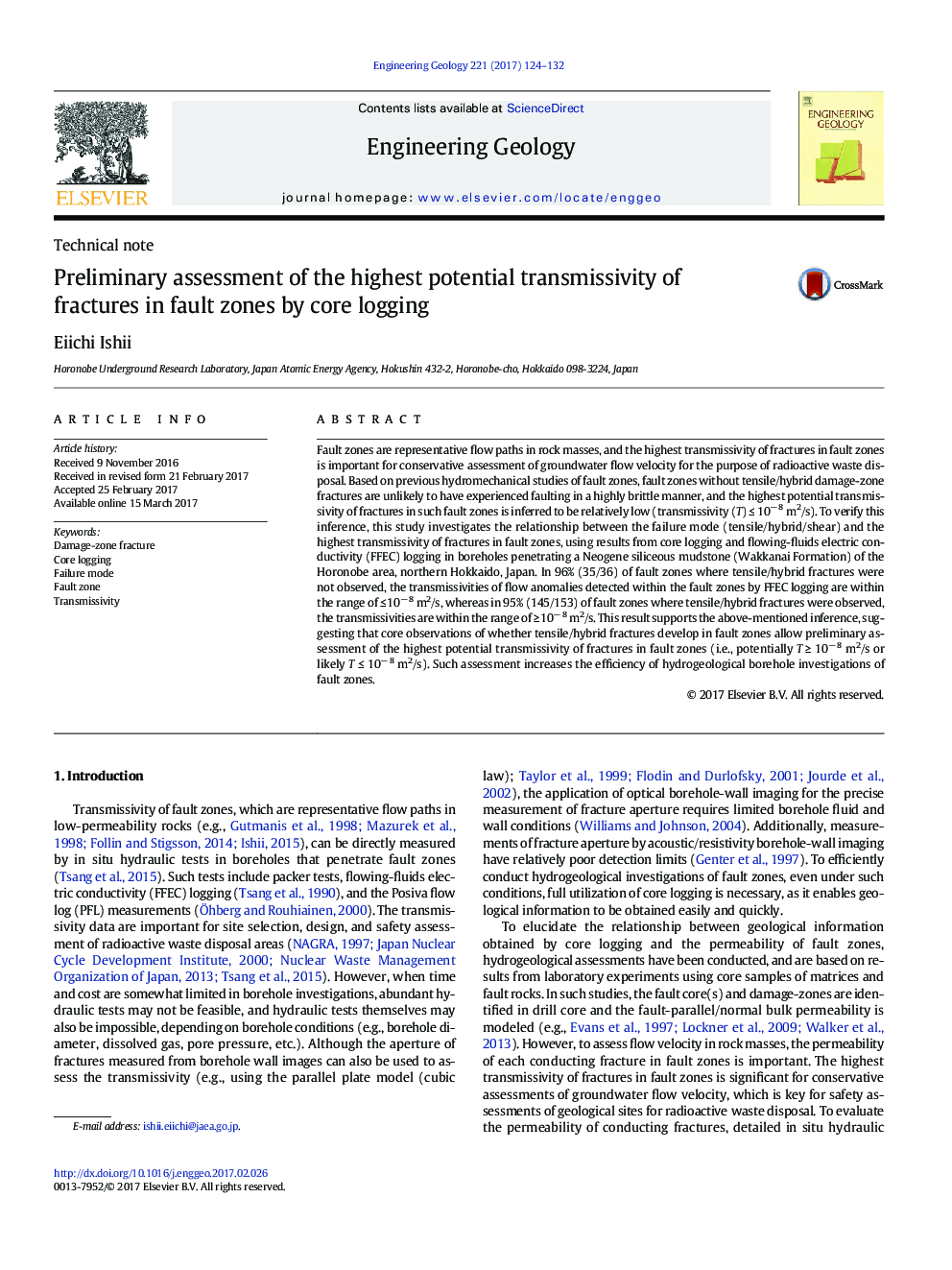| Article ID | Journal | Published Year | Pages | File Type |
|---|---|---|---|---|
| 5787655 | Engineering Geology | 2017 | 9 Pages |
â¢The highest potential transmissivity of fractures in fault zones is an important factor.â¢Failure mode of damage-zone fractures is closely related to transmissivity.â¢Core logging of the failure mode allows preliminarily assessment of transmissivity.
Fault zones are representative flow paths in rock masses, and the highest transmissivity of fractures in fault zones is important for conservative assessment of groundwater flow velocity for the purpose of radioactive waste disposal. Based on previous hydromechanical studies of fault zones, fault zones without tensile/hybrid damage-zone fractures are unlikely to have experienced faulting in a highly brittle manner, and the highest potential transmissivity of fractures in such fault zones is inferred to be relatively low (transmissivity (T) â¤Â 10â 8 m2/s). To verify this inference, this study investigates the relationship between the failure mode (tensile/hybrid/shear) and the highest transmissivity of fractures in fault zones, using results from core logging and flowing-fluids electric conductivity (FFEC) logging in boreholes penetrating a Neogene siliceous mudstone (Wakkanai Formation) of the Horonobe area, northern Hokkaido, Japan. In 96% (35/36) of fault zones where tensile/hybrid fractures were not observed, the transmissivities of flow anomalies detected within the fault zones by FFEC logging are within the range of â¤Â 10â 8 m2/s, whereas in 95% (145/153) of fault zones where tensile/hybrid fractures were observed, the transmissivities are within the range of â¥Â 10â 8 m2/s. This result supports the above-mentioned inference, suggesting that core observations of whether tensile/hybrid fractures develop in fault zones allow preliminary assessment of the highest potential transmissivity of fractures in fault zones (i.e., potentially T â¥Â 10â 8 m2/s or likely T â¤Â 10â 8 m2/s). Such assessment increases the efficiency of hydrogeological borehole investigations of fault zones.
